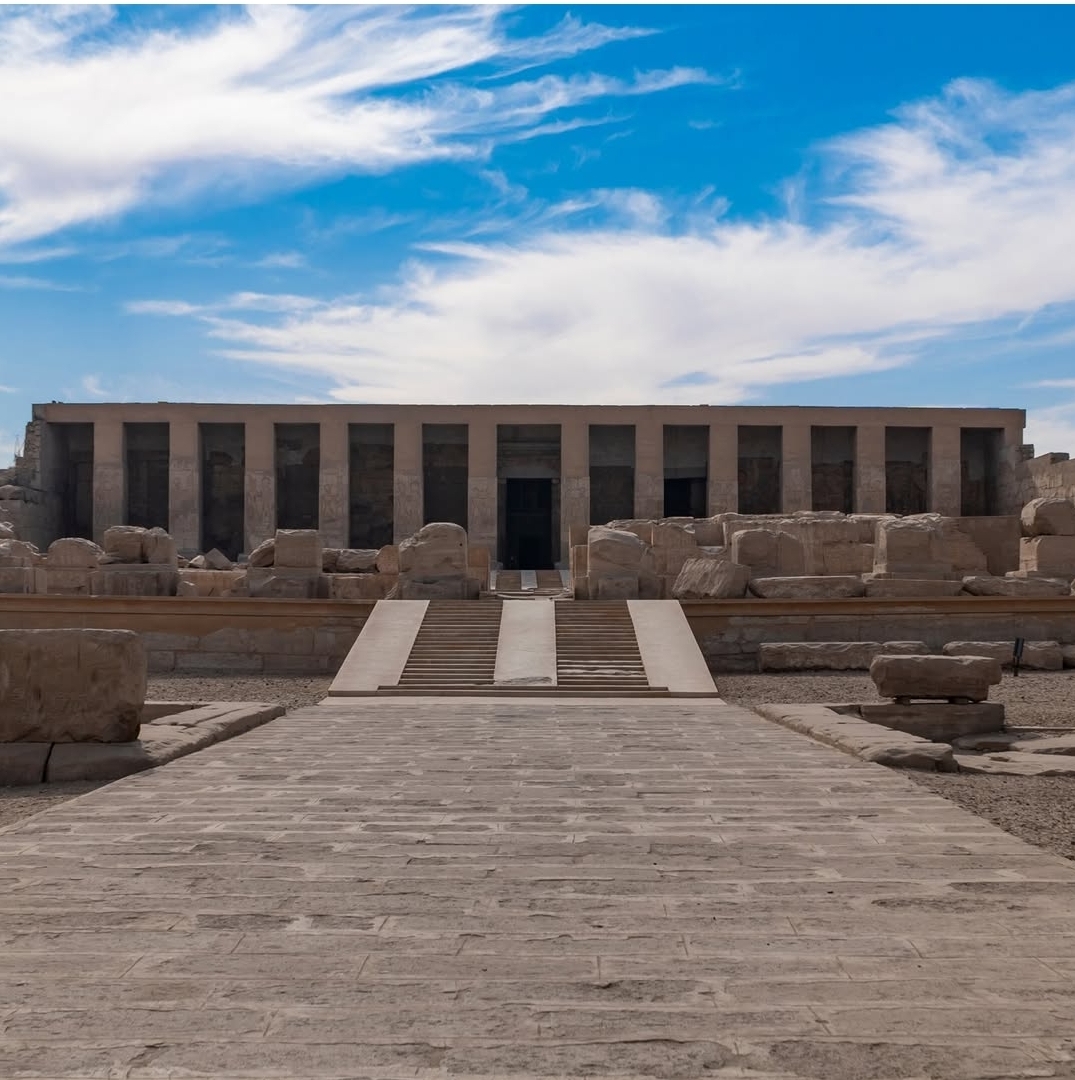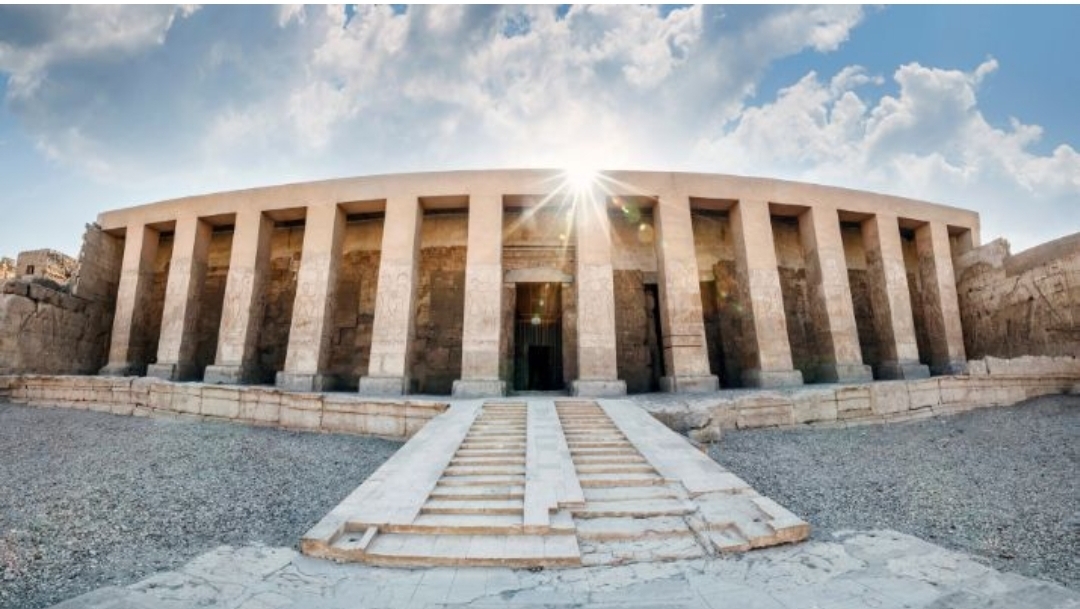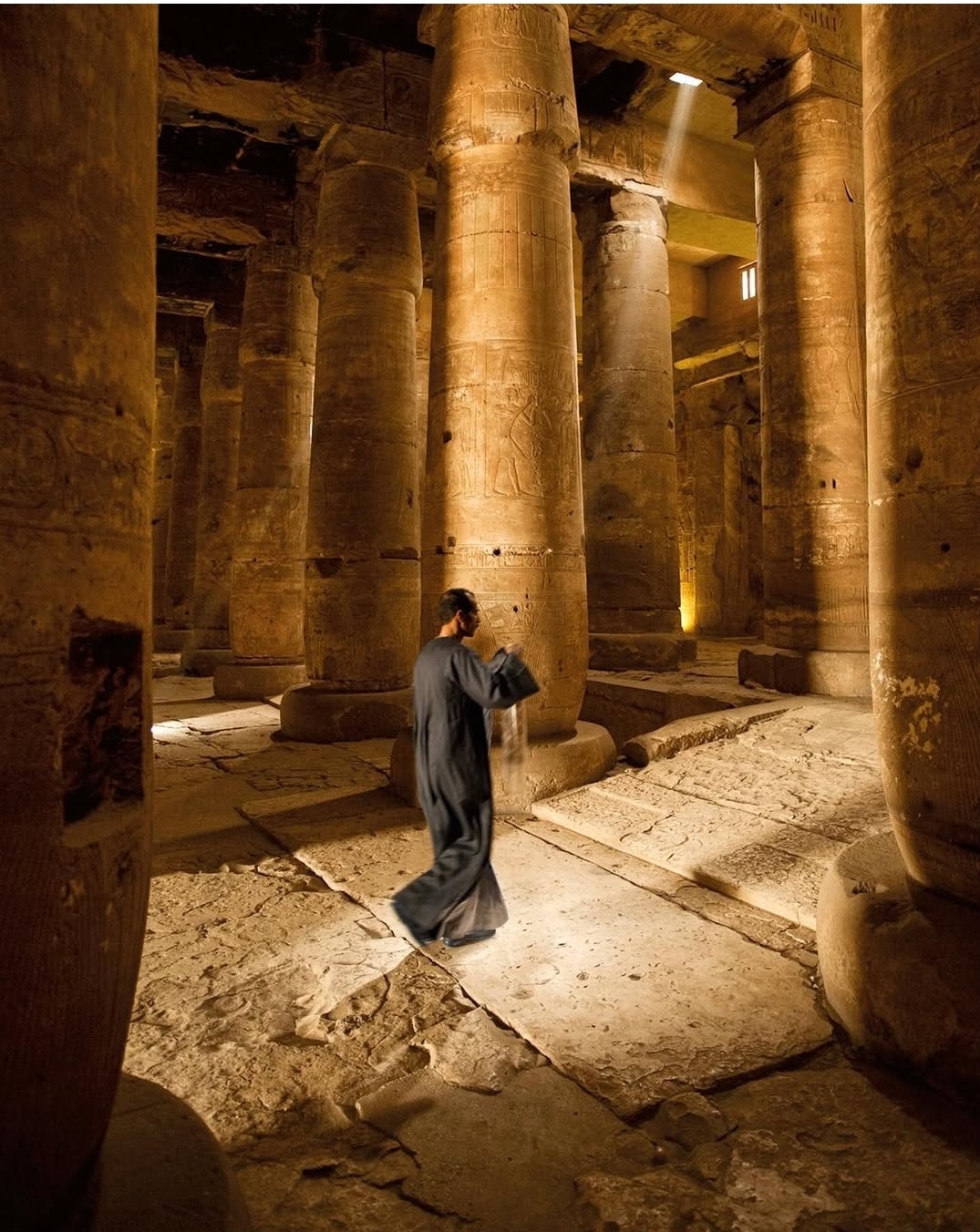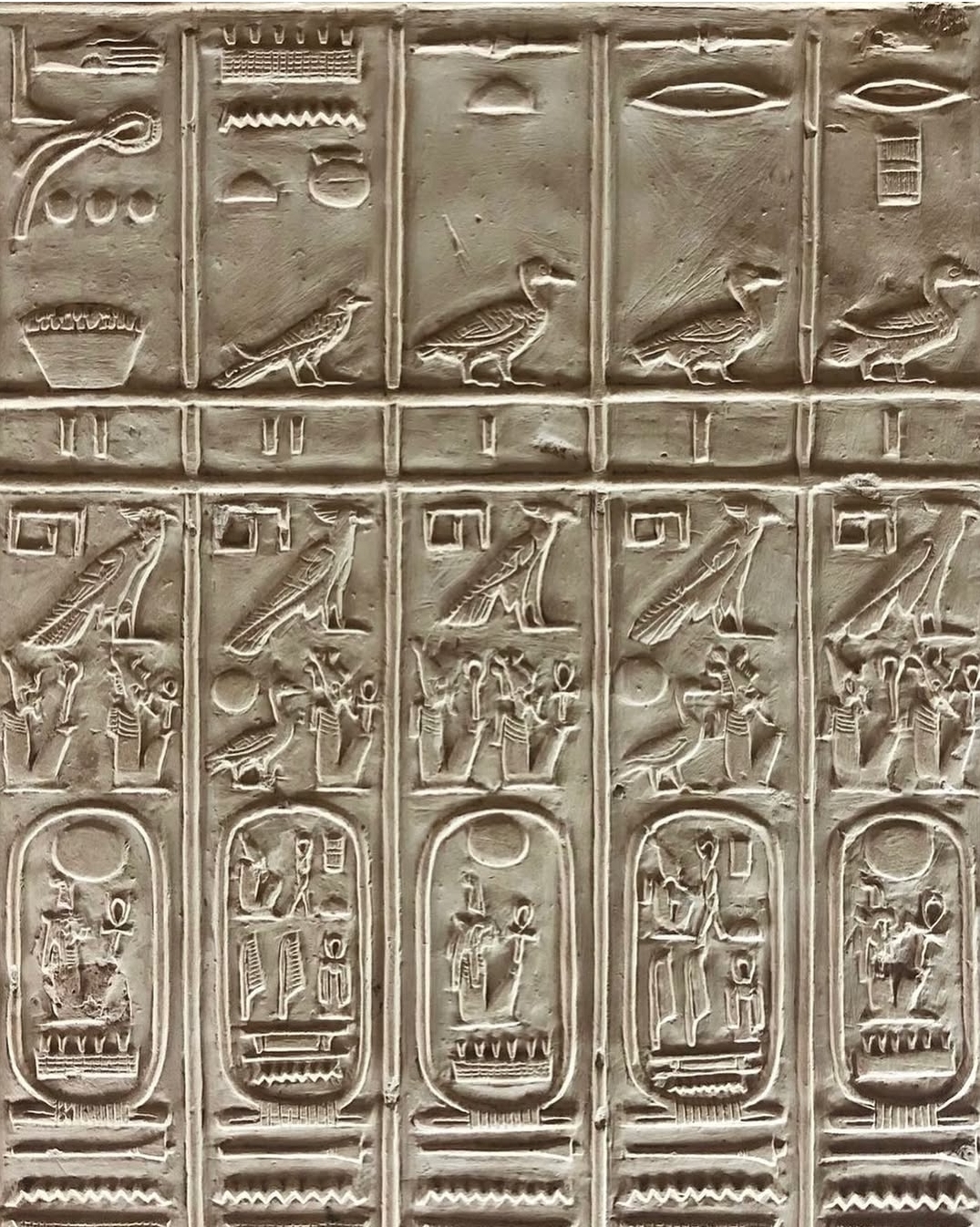Abydos (Temple of Seti I)
The Temple of Seti I at Abydos is one of the most significant and beautifully decorated ancient Egyptian temples, renowned for its artistic reliefs, historical inscriptions, and religious importance. Located in Upper Egypt, about 11 kilometers (6.8 miles) west of the Nile River, the temple was built by Pharaoh Seti I (ruled 1290–1279 BCE) of the 19th Dynasty and completed by his son, the great Ramses II.
Abydos was a sacred city in ancient Egypt, considered the cult center of Osiris, the god of the afterlife. The temple served as a mortuary monument for Seti I and a place of worship for Osiris, Isis, Horus, Ptah, Re-Horakhty, Amun, and Seti I himself, who was deified after his death.
Architectural and Artistic Highlights
The temple is famous for its L-shaped layout, unique among Egyptian temples, and its exquisitely carved reliefs, considered some of the finest from the New Kingdom. Key features include:
-
The Seven Chapels – Dedicated to the six major gods and Seti I, each with beautifully preserved painted reliefs showing the king making offerings.
-
The Abydos King List – A priceless chronological record of 76 pharaohs from Menes (Narmer) to Seti I, carved in the temple’s Hall of Ancestors. This list omits controversial rulers like Hatshepsut and Akhenaten.
-
The Osireion – A mysterious underground structure behind the temple, possibly a symbolic tomb of Osiris, built with megalithic stones resembling the Valley Temple of Giza.
-
The “Mysteries of Osiris” Reliefs – Detailed depictions of the Osiris myth, including his murder by Seth, resurrection by Isis, and the triumph of Horus.
Religious and Historical Significance
Abydos was a major pilgrimage site for ancient Egyptians, who believed it was the burial place of Osiris. The annual Osiris Festival attracted thousands, with rituals reenacting the god’s death and rebirth.
The temple’s hieroglyphs and artwork provide crucial insights into New Kingdom religion, royal ideology, and artistry. Unlike other temples, which were often altered by later rulers, Abydos remains largely untouched, preserving Seti I’s original vision.
Today, the Temple of Seti I at Abydos is a UNESCO World Heritage candidate and a must-visit for anyone interested in Egyptology, ancient religion, or Pharaonic history. Its serene atmosphere and stunning carvings make it one of Egypt’s most awe-inspiring archaeological treasures.




